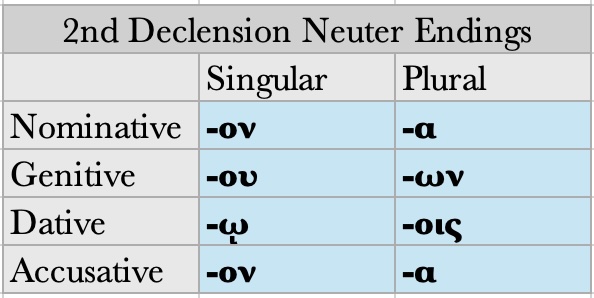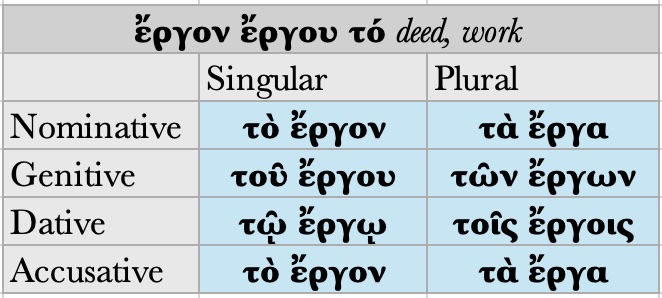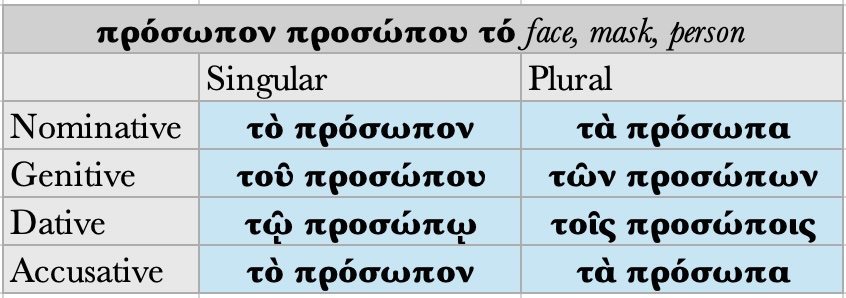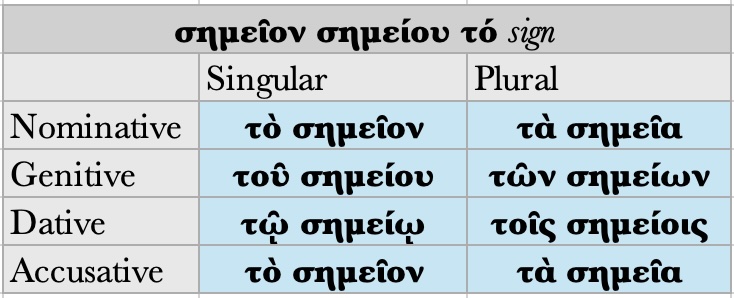20.8 Second declension NEUTER nouns use endings like the neuter article, and differ from the pronouns αὐτός, αὐτή, αὐτό and ἐκεῖνος, ἐκείνη, ἐκεῖνο only in that -ον (not -ο) is the ending for the nominative and accusative singular. They also follow the NEUTER LAWS that we learned earlier during our study of third declension nouns. Namely:
The NOMINATIVE and ACCUSATIVE SINGULAR must be IDENTICAL.
The NOMINATIVE and ACCUSATIVE PLURAL also must be IDENTICAL, and end in a short –α.
Whenever any NEUTER noun is the subject of a verb, the verb is regularly 3rd PERSON SINGULAR, even if the neuter subject is plural!
20.9 ACCENT RULES for neuter nouns follow those of masculine second declension nouns (S 231, G 63):
Charts JPG








